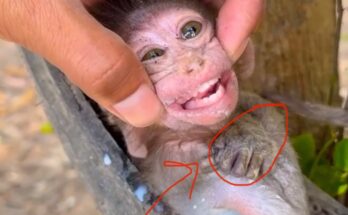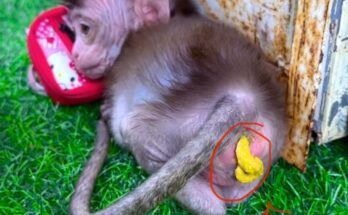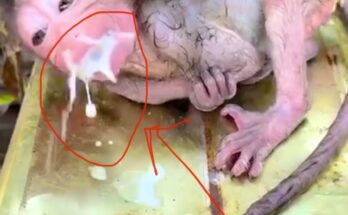Monkeys, like humans, rely heavily on their eyesight for survival, social interaction, and exploration. Eye diseases in monkeys are not only painful but can also lead to blindness and social exclusion if left untreated. Over the past decade, veterinarians and wildlife specialists have developed highly effective treatments to manage and cure various eye conditions in monkeys—ranging from infections and injuries to age-related degenerative diseases. This article explores the most successful treatment options available today for sick monkey eyes, based on the latest research and veterinary practices.
Common Eye Problems in Monkeys
Monkeys can suffer from a range of ocular problems, including:
-
Conjunctivitis (pink eye)
-
Cataracts
-
Corneal ulcers
-
Uveitis
-
Trauma or injury
-
Parasitic infections
-
Glaucoma
These issues may arise in both wild and captive primates due to poor hygiene, exposure to environmental irritants, genetic predisposition, or trauma. In rescue centers and zoos, early detection and intervention are critical to successful treatment.
Diagnostic Advances
Recent developments in diagnostic tools such as non-invasive ocular imaging, portable slit lamps, and digital fundus photography have revolutionized how veterinarians assess and diagnose eye conditions in primates. With these tools, eye conditions can be identified early, even before visible symptoms appear, allowing for faster and more targeted treatments.
Top Treatment Methods for Monkey Eye Conditions
1. Antibiotic and Antiviral Eye Drops
For infections such as conjunctivitis or keratitis, medicated eye drops are the first line of defense. These drops can effectively clear bacterial and viral infections within days. In wildlife centers, zookeepers are trained to administer drops safely using distraction or enrichment techniques.
2. Surgical Intervention for Cataracts
One of the most exciting developments is cataract surgery for monkeys, which has shown remarkable success. With the help of veterinary ophthalmologists, monkeys suffering from vision impairment due to cataracts can regain full sight. This surgery involves replacing the clouded lens with an artificial one—similar to human procedures.
3. Anti-inflammatory and Steroid Treatments
For eye inflammation or autoimmune conditions like uveitis, steroid eye drops or oral medications are administered. These treatments must be carefully managed due to potential side effects, especially in small primates.
4. Laser Therapy and Cryotherapy
Advanced cases of glaucoma or retinal disorders can now be managed with laser treatments or cryotherapy. These minimally invasive methods help reduce intraocular pressure or repair damaged retinal tissue.
Preventative Care and Rehabilitation
Preventative measures—such as clean enclosures, regular eye exams, and nutritional support—play a key role in maintaining primate eye health. Vitamin A supplementation, in particular, has been shown to reduce the risk of corneal disorders in monkeys.
Rehabilitation for monkeys recovering from eye treatment often includes enrichment activities that help them re-engage with their environment using their restored vision. Social reintegration is also monitored closely, as vision plays a key role in primate communication and hierarchy.
Conclusion
Thanks to recent advances in veterinary ophthalmology, treating eye diseases in monkeys has become more effective than ever. Whether through surgical techniques, targeted medications, or non-invasive therapies, sick monkey eyes are no longer a mystery to modern science. These breakthroughs not only improve the quality of life for the animals but also support broader conservation efforts by keeping primates healthy and thriving.



